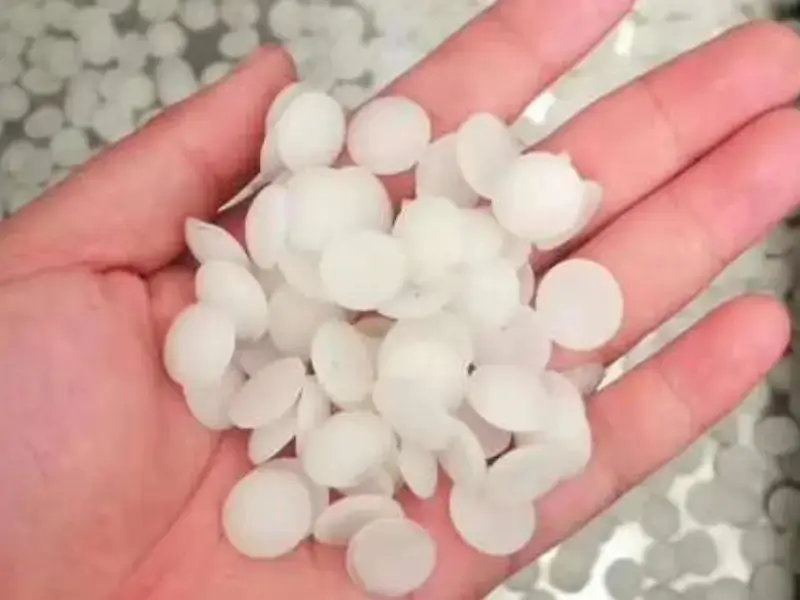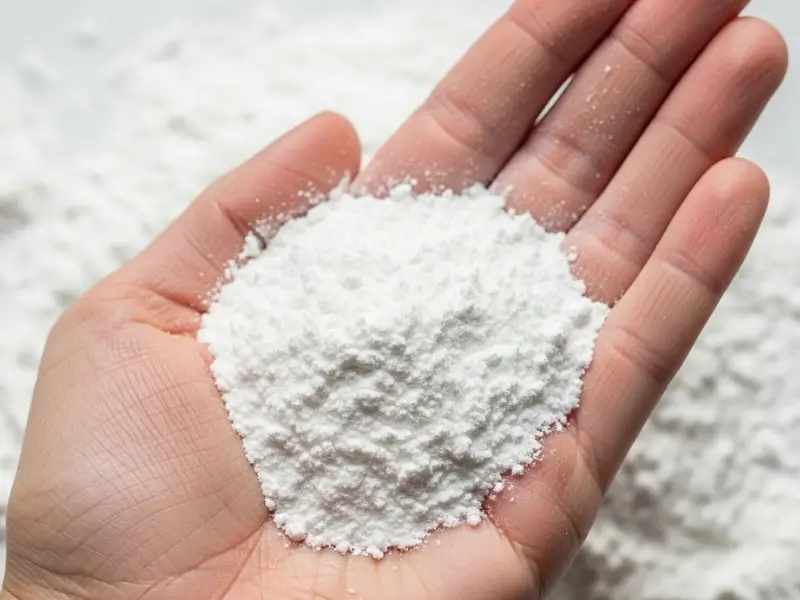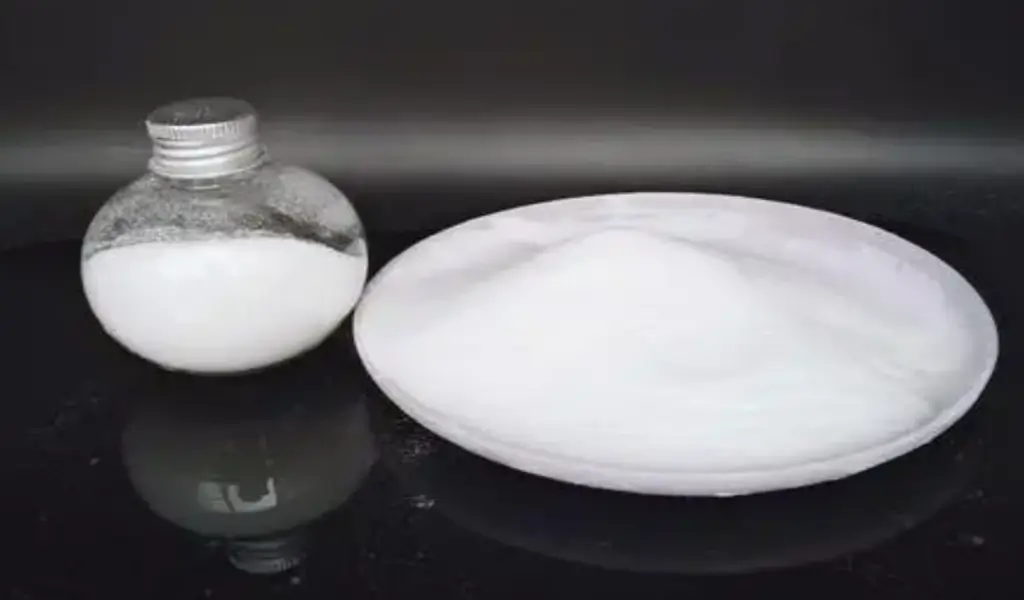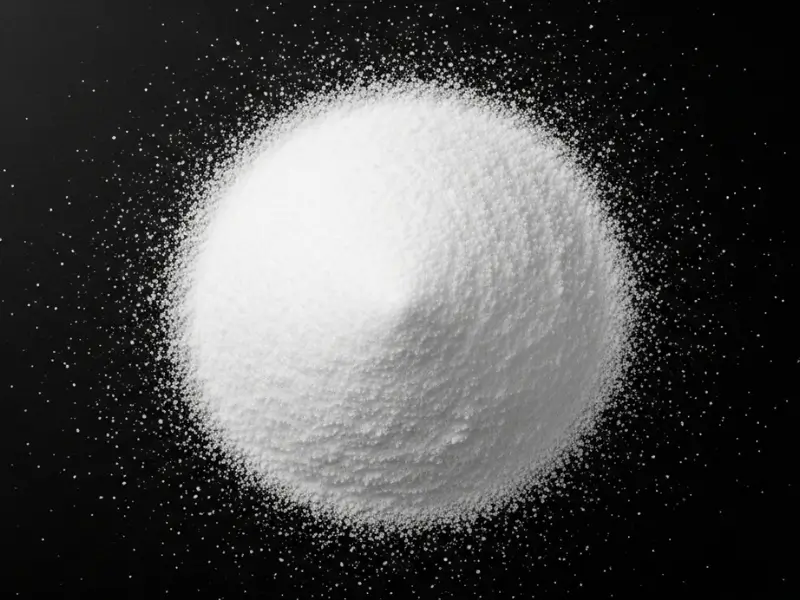The article titled “Understanding How Chlorinated Polyvinyl Chloride Is Made” explores the intricate processes involved in the production of CPVC, a material vital for various applications in industries such as plumbing and construction. By examining the chemical composition, manufacturing techniques, quality control measures, and environmental implications of creating CPVC, this article aims to provide a comprehensive overview that informs industry professionals about this indispensable material and its advantages. The significance of understanding CPVC production lies in selecting the best materials for construction and system installations, ultimately leading to better product performance and longevity.
1. Introduction to Chlorinated Polyvinyl Chloride
Chlorinated polyvinyl chloride, or CPVC, is a thermoplastic polymer recognized for its durability and resistance to chemical corrosion. This material is a derivative of standard polyvinyl chloride (PVC) but has undergone a chlorination process that enhances its thermal resistance and overall mechanical properties. But here’s the kicker: CPVC can withstand higher temperatures and offers greater resistance to aggressive chemicals, making it a perfect choice for both commercial and residential plumbing systems.
The production of CPVC starts with the polymerization of vinyl chloride monomers, followed by chemical chlorination. This transformation is crucial because it not only increases the thermal stability of the material but also improves its resistance against various chemical agents found in industrial applications. CPVC is widely used in piping systems, particularly for transporting hot water and corrosive fluids, and it plays a significant role in industrial applications, including power and process piping.
As industries push towards sustainable practices, the demand for reliable, high-performance materials like CPVC has surged. This demand is fueled by its ability to reduce long-term installation costs and maintenance needs. Understanding how CPVC is made involves delving into its raw materials, the intricacies of its production process, and the inherent qualities that make it suitable for diverse applications. In the following sections, we will explore these aspects in greater detail.
| Property | Description |
|---|---|
| Temperature Resistance | Can withstand temperatures up to 200°F |
| Corrosion Resistance | Excellent resistance to harsh chemicals |
| Longevity | Extended service lifespan |
| Cost-Effectiveness | Competitive compared to alternative materials |
2. The Chemical Composition of CPVC
Understanding the chemical composition of CPVC is crucial to grasp its properties and applications. CPVC is formed by the chlorination of PVC, which involves the substitution of hydrogen atoms in the PVC structure with chlorine atoms. What’s the real story? Through this process, we effectively alter the molecular arrangement, enhancing CPVC’s thermal stability and corrosion resistance.
The primary unit within CPVC is formed from vinyl chloride monomers linked together through polymerization. The introduction of chlorine increases the molecular weight of the polymer, leading to improved mechanical properties. This transformation is what allows CPVC to resist heat and chemicals that would otherwise degrade ordinary PVC.
Moreover, the chlorine content in CPVC can range from 63% to 70%, which significantly bolsters its performance. This unique chemical structure lends itself to various applications, particularly in high-temperature environments such as industrial piping. CPVC’s enhanced properties make it suitable for transporting not just water but also chemicals, oils, and gases without the risk of degradation or contamination.
Understanding this chemical foundation lays the groundwork for appreciating the manufacturing processes and applications that will be discussed later.
| Component | Percentage (%) |
|---|---|
| Chlorine | 63-70% |
| Carbon | 29-33% |
| Hydrogen | 2-6% |
3. Raw Materials in CPVC Production
Let’s dive into the raw materials that are essential for producing CPVC. The primary ingredient is the vinyl chloride monomer, which is synthesized through a reaction between ethylene and chlorine gas. But here’s where it gets interesting: the purity and quality of raw materials directly impact the quality of the final product.
Manufacturers must source high-quality vinyl chloride from reliable suppliers to ensure consistent performance in their CPVC products. This is where strict quality control measures come into play. In addition to vinyl chloride, other materials such as stabilizers, lubricants, and fillers may be added to enhance specific properties or processability of the final CPVC composition.
Stabilizers are particularly important as they prevent degradation during processing and protect the material from heat and ultraviolet (UV) light during its service life. Moreover, additives like impact modifiers can improve CPVC’s resistance to impact forces, making it more durable in various applications.
It’s also essential to consider the cost implications of sourcing these materials. Fluctuations in the market can affect the price and availability of key ingredients, impacting overall production costs. Being knowledgeable about these factors enables manufacturers to plan and budget more effectively, ensuring that the production process remains efficient and cost-effective.
| Material | Purpose |
|---|---|
| Vinyl Chloride Monomer | Primary building block for CPVC |
| Chlorine Gas | Chlorination process |
| Stabilizers | Prevent degradation during processing |
| Lubricants | Enhance flow properties during manufacturing |
| Impact Modifiers | Improve durability and resistance |
4. The Manufacturing Process Overview
The manufacturing process of CPVC is a sophisticated blend of science and engineering. At its core, the process can be divided into several critical steps, primarily polymerization and chlorination. What’s the exciting part? Each stage in the process is designed to optimize the characteristics of the final product.
Initially, vinyl chloride is polymerized to create polyvinyl chloride, which is then subjected to chlorination. This process can be done through various techniques, including suspension, emulsion, or bulk methods. The choice of the method often depends on the desired properties of the CPVC being produced.
Next, the material undergoes various treatments, including mixing with stabilizers, lubricants, and fillers, to enhance its performance. The final CPVC product is then extruded into pipes, sheets, or other forms, depending on the intended application. Advanced technologies also allow for real-time monitoring and control, ensuring that the properties of CPVC remain consistent throughout production.
Understanding these stages is essential for manufacturers aiming to improve quality and efficiency. In a competitive marketplace, refining the production process can lead to significant advantages in product performance and cost savings.
| Stage | Description |
|---|---|
| Polymerization | Conversion of vinyl chloride to polyvinyl chloride |
| Chlorination | Chemical alteration to enhance thermal stability |
| Compounding | Mixing with additives and stabilizers |
| Extrusion | Shaping the final product into usable forms |
5. Polymerization: The Core of CPVC Production
Polymers are at the heart of CPVC production, and understanding the polymerization process is essential for anyone interested in the material’s properties. The production begins with the polymerization of vinyl chloride gas, creating a resin that serves as the foundation for CPVC. Ready for the good part? Different polymerization techniques can yield varying properties in the resultant CPVC.
One common method is suspension polymerization, which leads to a granular polymer that can be easily processed into different forms. This method allows manufacturers to have tight control over the size and shape of the resulting polymer particles, which ultimately influences the physical properties of the final product.
In contrast, emulsion polymerization can produce a more uniform particle size and helps create a CPVC that is easier to process in certain applications. Throughout the polymerization, temperature and pressure must be meticulously controlled to ensure the desired molecular weight and other properties are achieved.
The ability to select the appropriate polymerization method based on the desired outcome underscores the importance of expertise in the manufacturing process. Understanding these nuances allows manufacturers to tailor CPVC for specific applications, enhancing its versatility in the marketplace.
| Technique | Description |
|---|---|
| Suspension Polymerization | Produces granular particles for easy processing |
| Emulsion Polymerization | Results in uniform particles for better consistency |
| Bulk Polymerization | Utilizes high concentrations for a more efficient reaction |
6. The Role of Chlorination
Chlorination is a pivotal step in CPVC production, marking the transition of standard PVC to its chlorinated counterpart. The process involves adding chlorine gas to the PVC polymer to substitute hydrogen atoms with chlorine. But what’s the significance of this step? Chlorination enhances the thermal stability and chemical resistance of the resulting CPVC.
The chlorine content in CPVC can range from 63% to 70%, which significantly affects its performance. The transformation enables CPVC to withstand aggressive chemicals and elevated temperatures, making it suitable for hot water applications and piping systems transporting corrosive materials.
Safety is paramount during chlorination, as it involves handling hazardous chemicals. Manufacturers must implement robust safety protocols to protect personnel and the environment. This includes using specialized equipment to control chlorine concentrations, continuous monitoring for leak detection, and adhering to strict waste disposal procedures to minimize environmental impact.
Moreover, advancements in technology have led to more efficient chlorination processes, reducing energy consumption and waste generation. These innovations not only enhance production efficiency but also contribute to a more sustainable manufacturing operation.
| Step | Description |
|---|---|
| Gas Introduction | Controlled injection of chlorine gas into PVC |
| Reaction Conditions | Monitoring temperature, pressure, and concentration |
| Quality Assurance | Testing chlorine levels to ensure proper chlorination |
7. Quality Control Measures
Quality control in CPVC manufacturing is vital to ensure that the final product meets industry standards and performs reliably. The production process is inherently complex, but here’s the kicker: a robust quality assurance program can prevent costly defects and improve customer satisfaction.
From raw material testing to final product inspection, quality control measures must be implemented at every stage of the manufacturing process. For example, raw materials like vinyl chloride undergo rigorous testing to confirm their purity and compliance with specifications. Advanced analytical techniques are often employed to detect impurities and ensure consistency.
As for the finished product, testing is essential to verify performance characteristics such as tensile strength, impact resistance, and thermal stability. Various industry standards guide these tests, including ASTM and ISO certifications, which affirm the quality and reliability of CPVC products.
Importantly, a culture of quality within the organization also contributes significantly to overall product integrity. By fostering a focus on quality at every organizational level, manufacturers can build a reputation for excellence and reliability in the marketplace.
| Test | Purpose |
|---|---|
| Tensile Strength Test | Measures resistance to physical stresses |
| Impact Resistance Test | Assesses durability under impact scenarios |
| Thermal Stability Test | Evaluates performance at high temperatures |
8. Environmental Implications of CPVC Production
In today’s manufacturing landscape, environmental considerations are more critical than ever. CPVC production is not exempt from these concerns. As industries shift towards sustainability, understanding the environmental implications of manufacturing is crucial. What’s the real story here? While CPVC offers numerous advantages, its production can pose environmental challenges.
The chlorination process, for instance, involves handling hazardous materials, which can result in emissions if not properly managed. Manufacturers must adopt strategies to mitigate these risks, such as advanced emission controls and waste management practices. Moreover, leading companies are implementing closed-loop systems that recycle by-products and reduce waste.
Regulatory compliance is another important aspect of minimizing environmental impact. Numerous laws govern chemical manufacturing, and adherence to these regulations helps ensure that operations are sustainable and environmentally responsible.
In recent years, industry leaders have begun to invest heavily in research and development aimed at creating more sustainable manufacturing processes and reducing the carbon footprint associated with CPVC production.
| Practice | Description |
|---|---|
| Emission Control | Systems to capture harmful emissions |
| Waste Management | Strategies for reducing production waste |
| Closed-Loop Systems | Recycling by-products to minimize waste |
9. Applications of CPVC in Various Industries
CPVC is widely recognized for its versatility across numerous industries. This material’s unique properties—such as corrosion resistance, thermal stability, and ease of installation—make it a preferable choice for many applications. Ready for the good part? CPVC is particularly popular in plumbing and construction, where its long-lasting performance is critical.
In plumbing systems, CPVC piping is often used to transport hot and cold water, due to its ability to withstand high temperatures without degrading. This is especially important in regions where temperatures can fluctuate significantly. Additionally, CPVC’s resistance to corrosion ensures that water quality is not compromised during transport.
In construction, CPVC is increasingly used in fire sprinkler systems due to its lightweight nature and high performance under heat. The material is also prevalent in industrial applications, where it can handle aggressive chemicals safely, contributing to safer environments in manufacturing and processing facilities.
A growing trend in its usage is also observed in electrical applications, where CPVC is employed for protective conduit systems to safeguard wiring from damage. The expanding list of CPVC applications showcases its importance in contemporary infrastructure.
| Application | Industry |
|---|---|
| Plumbing Systems | Residential and Commercial |
| Fire Sprinkler Systems | Construction |
| Electrical Conduits | Telecommunications & Utilities |
| Industrial Piping | Chemical Processing |
10. Challenges Faced During CPVC Production
Despite its many advantages, CPVC manufacturing is not without challenges. Many factors can disrupt production efficiency and overall quality. But here’s where it gets interesting: by recognizing these challenges, manufacturers can proactively develop strategies to address them.
One significant challenge is the volatility of raw material prices. Fluctuations in the prices of vinyl chloride and chlorine can severely impact production costs, forcing companies to adapt their purchasing strategies or pass costs onto consumers. This underscores the need for effective supply chain management.
Additionally, meeting strict environmental regulations can also pose challenges. Companies must invest in technologies and processes that not only comply with regulations but also promote sustainability. The initial financial outlay might be high, but the long-term benefits of eco-friendliness often outweigh these initial costs.
Lastly, competition in the market is fierce. As demand for CPVC rises, so too does the number of manufacturers. To stay ahead, companies must continuously innovate and seek efficiencies throughout their operations.
| Challenge | Description |
|---|---|
| Raw Material Cost Fluctuations | Impact production budgeting and pricing |
| Regulatory Compliance | Ensuring adherence to environmental laws |
| Market Competition | Standing out in a growing market |
11. Innovations in CPVC Technology
The future of CPVC production is promising, driven by ongoing innovations and technological advances. What’s the exciting part? Innovations are not only enhancing traditional production methods but also leading to the development of alternative materials and applications.
For instance, advancements in polymerization technology have allowed for better control of polymer characteristics, yielding CPVC that is even more resilient and versatile. The integration of computer modeling and simulation is enhancing the design processes, enabling manufacturers to experiment with formulations before physical production begins.
Moreover, there is a shift towards incorporating recycled materials into CPVC production without compromising quality. This move towards circular economy practices is gaining traction as companies aim to reduce waste and utilize existing materials more efficiently.
As complexity and consumer demands increase, manufacturers who embrace these innovations will likely find themselves at the forefront of the industry, positioned to deliver superior products that meet evolving market needs.
| Innovation | Impact |
|---|---|
| Enhanced Polymerization Techniques | Improved properties and performance |
| Recycling Processes | Reducing environmental impact |
| Smart Manufacturing Systems | Optimizing efficiency and quality control |
12. CPVC in Comparison to Other Materials
When it comes to choosing materials for plumbing and construction, the comparison between CPVC and other alternatives, like PVC or metal, is essential. What’s the comparison showing us? Overall, CPVC outshines many materials in several critical areas.
With higher thermal resistance compared to standard PVC, CPVC proves more suitable for hot water applications. Additionally, CPVC’s resistance to corrosion is significantly greater than that of metal pipes, reducing maintenance and replacement costs over time.
Price-wise, while CPVC can have a higher initial cost than PVC, its longevity and lower maintenance needs often make it the more cost-effective option in the long term. Importantly, its lightweight nature simplifies installation, contributing to further labor cost savings during projects.
In summary, while other materials may have their places, the superior properties of CPVC often establish it as the choice material in demanding applications.
| Feature | CPVC | PVC | Metal |
|---|---|---|---|
| Temperature Resistance | Up to 200°F | Up to 140°F | Variable, often less than CPVC |
| Corrosion Resistance | Excellent | Moderate | Poor |
| Weight | Lightweight | Lightweight | Heavy |
| Cost Over Time | Cost-effective | Lower initial cost | Higher maintenance costs |
13. Industry Standards and Regulations
Understanding the regulatory landscape is crucial for those involved in CPVC manufacturing. The production of CPVC is subject to numerous industry standards that ensure the safety and quality of the final product. But here’s the kicker: non-compliance can lead to significant penalties and damage a company’s reputation.
Organizations like ASTM International and the American National Standards Institute (ANSI) provide comprehensive guidelines that CPVC manufacturers must adhere to. These standards cover various aspects, including raw material quality, product specifications, and testing protocols.
Furthermore, certifications such as NSF/ANSI 61 confirm that CPVC products are safe for use in drinking water systems, enhancing consumer confidence. Staying informed about regulatory changes is critical for manufacturers who wish to maintain compliance and competitiveness in the industry.
Investing in continuous education and proper training for employees regarding these regulations ensures adherence and fosters a culture of quality and safety within the organization.
| Organization | Standards Description |
|---|---|
| ASTM International | Sets specifications for materials |
| ANSI | Establishes safety and performance criteria |
| NSF International | Certifies for safe drinking water usage |
14. The Future of Chlorinated Polyvinyl Chloride
The future landscape for CPVC production looks promising, with advancements in technology and growing applications driving demand. What’s the exciting part? As environmental concerns come to the forefront, the industry is evolving to include more sustainable practices and forward-thinking innovations.
Emerging trends such as green chemistry are influencing the development of biodegradable alternatives to traditional CPVC. Companies are increasingly banking on sustainability not only to comply with regulations but also to appeal to the eco-conscious consumer market.
Furthermore, the integration of digital technologies and smart manufacturing processes is likely to revolutionize production, making it more efficient and adaptable. As companies navigate these shifts, they will need to remain agile and flexible to seize opportunities that arise within an ever-changing marketplace.
Overall, the evolution of CPVC production signifies a departure from conventional practices and a move towards sustainability and innovation that ensures its place in future projects.
| Trend | Description |
|---|---|
| Sustainable Manufacturing | Focus on eco-friendly processes |
| Biodegradable Alternatives | Development of new materials |
| Smart Manufacturing Technologies | Integration of advanced technology in production |
15. Conclusion
In conclusion, understanding how chlorinated polyvinyl chloride is made offers insights into its versatility and importance in various industries. The production process encompasses several key stages, from raw materials to chlorination and quality control, each vital for ensuring that the final product meets high standards.
As the demand for CPVC continues to grow, staying informed about advancements and challenges in manufacturing will be essential. By embracing innovation and sustainable practices, manufacturers can position themselves competitively in the market. Moving forward, CPVC will undoubtedly continue to play a critical role in plumbing, construction, and beyond, making it essential knowledge for industry professionals.
FAQ
Q1: What is chlorinated polyvinyl chloride (CPVC)?
CPVC is a thermoplastic derived from PVC that has undergone chlorination, increasing its temperature resistance and chemical durability.
Q2: How does the production of CPVC work?
The production of CPVC involves the polymerization of vinyl chloride and subsequent chlorination, which replaces hydrogen atoms with chlorine to enhance its properties.
Q3: What are the benefits of using CPVC?
CPVC offers excellent corrosion resistance, high thermal tolerance, and lower maintenance costs, making it ideal for applications involving hot water and aggressive chemicals.
Q4: Are there environmental concerns associated with CPVC production?
Yes, CPVC production can present environmental challenges, but many manufacturers are adopting sustainable practices and compliance measures to mitigate these impacts.
Q5: What are the primary applications of CPVC?
CPVC is primarily used in plumbing, electrical conduits, and construction applications due to its strength, durability, and resistance to heat and chemicals.





